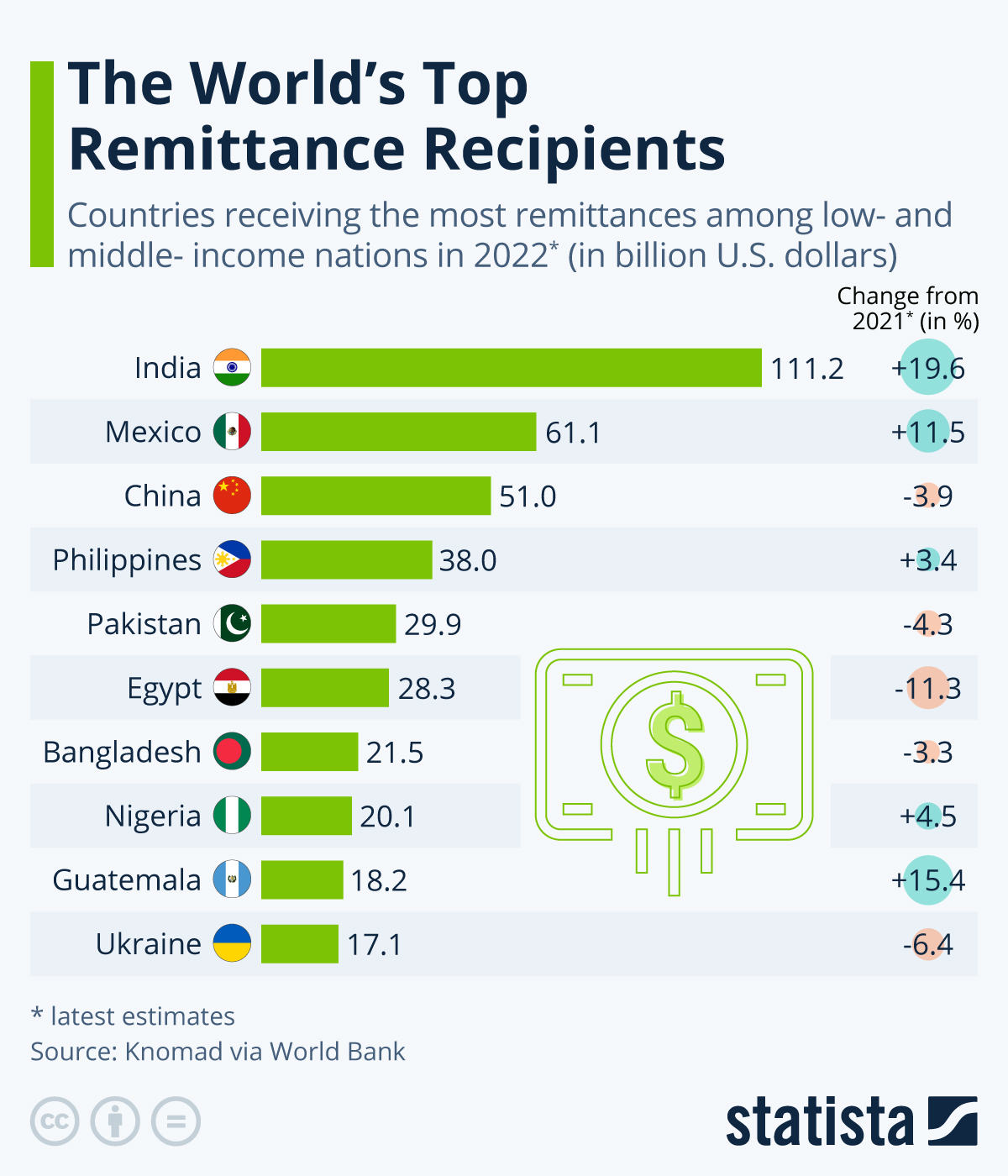In the post-COVID period, global remittance flows to low- and middle-income countries have been growing more slowly. Out of the ten biggest remittance recipients around the world, incoming payments have decreased in five. Overall, remittances to low- and middle-income countries rose by 8 percent between 2021 and 2022 after having increased by 10.6 percent between 2020 and 2021, the World Bank estimates. Global remittances are expected to total $647 billion in 2022, up from $599 billion last year and $542 billion in 2020.
While total remittance inflow was up, some countries actually saw it decrease quite substantially. Among them are Egypt, where remittance payments sunk by more than 11 percent, and also Ukraine, where they were down by 6.4 percent. For the latter country this was caused by decreased payments from Poland, the biggest source of remittances to Ukraine. The UN Development Programme pins the change on Ukrainian men previously working abroad returning home to serve in the Ukrainian armed forces. Informal payments, for example in cash, may have risen, however. Meanwhile, remittances to other countries in the region have soared because of money flowing out of Russia due to relocations and the ruble appreciating on the back of high commodity prices.
Among developing nations, India and Mexico received the most remittances in total and also saw some of the biggest increases in remittance payments in 2022 compared to 2021, at 19.6 percent and 11.5 percent, respectively. Remittance payments to Guatemala rose by 15.4 percent in the same time period.
The countries most reliant on remittance inflow in the World Bank ranking were Tajikistan (51 percent of GDP), Tonga (44 percent) as well as Lebanon (36 percent) and Samoa (34 percent).





















